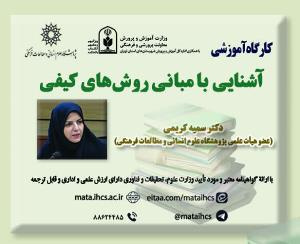شناسایی عوامل موثر بر اجتناب از رفتارهای ضد بهره وری در سازمان های دفاعی (مقاله علمی وزارت علوم)
درجه علمی: نشریه علمی (وزارت علوم)
آرشیو
چکیده
هدف تحقیق شناسایی عوامل موثر بر اجتناب از رفتارهای ضد بهره وری در سازمان های دفاعی می باشد. این پژوهش از نظر هدف کاربردی و از نظر روش، آمیخته-اکتشافی است. نمونه آماری تحقیق در بخش کیفی، 12 نفر از خبرگان دانشگاهی و اجرایی سازمان های دفاعی بودند که به روش نمونه گیری هدفمند انتخاب شدند. در بخش کمّی نیز تعداد 230 نفر از کارکنان یکی از سازمان های دفاعی کشور به روش تصادفی ساده انتخاب و در تحقیق مشارکت داده شدند. ابزار گرداوری داده ها در بخش کیفی مصاحبه نیمه ساختاریافته و در بخش کمّی پرسشنامه می باشد. برای تحلیل داده های کیفی از روش داده بنیاد و برای تحلیل داده های کمّی از مدل یابی معادلات ساختاری (نرم افزار PLS ) استفاده شده است. تحلیل داده ها حاکی از شناسایی 68 شاخص در قالب 13 مولفه و 4 بعد(عوامل سازمانی، عوامل مدیریتی، عوامل فردی و عوامل فرهنگی-اجتماعی) برای عوامل موثر بر اجتناب از رفتارهای بهره وری در سازمان های دفاعی می باشد. شاخص های برازش مدل نیز بر کیفیت و برازش مناسب مدل تحقیق دلالت دارد. تمرکز بر شاخص های شناسایی شده در این تحقیق از سوی مدیران و فرماندهان و کارکنان این سازمان ها در تمامی سطوح می تواند آنها را در اجتناب از رفتارهای بهره وری یاری نماید.Identifying the Affective Factors in Avoiding Anti-productive Behaviors in Defense Organizations
The alignment of knowledge and business strategies in the era of globalization, due to the ever-increasing amount of chaos, instability and increasing complexity of the global environment, is one of the most important challenges of the organization. Paying attention to the process of alignment is a very important step in successful implementation of strategies and achieving goals. This study aims to discover and build network and map of the themes of alignment of knowledge and business strategies based on the theory of activity domain in an Iranian organizational university. To this end, directed qualitative content analysis in 12 steps was used to answer the research questions. The results show that four capabilities (academic, physical, character and special) are needed to meet the strategic intellectual needs of the organizational university. By using 6 modalities of spatialization, temporalization, stabilization, mediation, contextualization and transition of a common understanding or communal meaning about the organization's knowledge resources and capabilities and strategic intellectual needs, operational alignment is created. It is concluded that the alignment of knowledge and business strategies in organizational universities can be operationalized on the basis of a common framework called activity domain. To achieve organizational goals, adopting a suitable approach for alignment is very important and can lead to success and achieving a sustainable competitive advantage for the organization.







